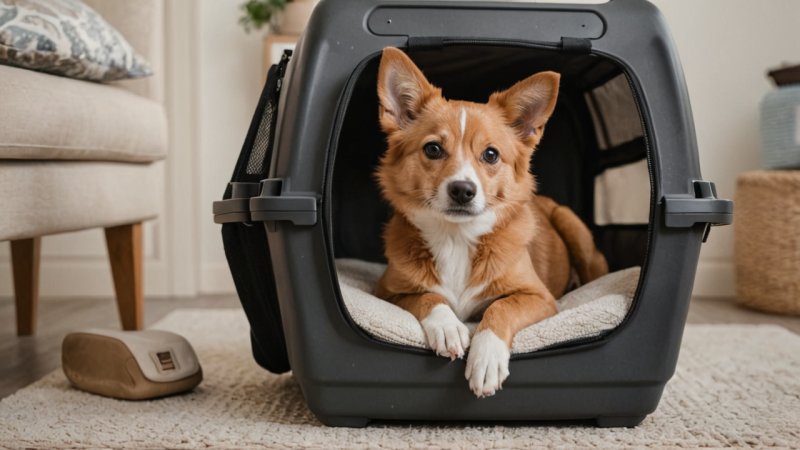Traveling can be an exhilarating experience, but it often comes with its own set of challenges, especially when it involves our furry companions. For many pet owners, the thought of taking their beloved pets on a journey can evoke feelings of anxiety, both for the pets and the owners. Pets, much like humans, can experience stress when faced with new environments, unfamiliar sounds, and changes in routine. Understanding how to manage and alleviate this anxiety is crucial for ensuring a smooth travel experience for everyone involved. In this article, we will explore effective strategies to help your pet navigate the challenges of travel, from planning ahead to utilizing calming techniques during the journey.
Understanding Pet Anxiety
Before we delve into solutions, it’s important to recognize the signs and causes of pet anxiety. Animals may exhibit various behaviors when feeling stressed, including excessive barking, whining, drooling, or destructive behavior. Common triggers for pet anxiety during travel include:
- New environments: Pets thrive on routine and familiarity. Entering a new place can be disorienting for them.
- Transportation methods: Whether it's a car ride, plane travel, or train journey, the mode of transport can cause discomfort.
- Separation anxiety: Pets may feel anxious if they are separated from their owners or other familiar companions.
- Unfamiliar sounds: The noises associated with travel, such as vehicle engines or airport announcements, can be frightening.
Pre-Travel Preparations
Taking a few proactive steps before hitting the road can make a significant difference in your pet’s comfort level. Here are some essential pre-travel preparations to consider:
- Visit the veterinarian: Schedule a check-up to ensure your pet is healthy enough to travel. Discuss any concerns you have about anxiety and ask for advice on calming medications if necessary.
- Familiarize your pet with travel gear: Whether it’s a new carrier, leash, or harness, allow your pet to explore these items before the trip. This can help reduce anxiety associated with unfamiliar objects.
- Practice short trips: Take your pet on short car rides or visits to nearby places to gradually acclimate them to travel.
- Pack essentials: Ensure you have all the necessary items for your pet, including food, water, bowls, leash, waste bags, and any comfort items like toys or blankets.
During the Journey
Once you are on the road or in the air, there are various techniques you can use to help soothe your pet and minimize anxiety:
- Create a comfortable space: Ensure your pet has a cozy and secure spot where they can relax. In a car, this might mean using a pet seatbelt or carrier, while in a plane, consider a soft-sided carrier with ample ventilation.
- Keep the environment calm: Use soothing music or calming pheromone sprays designed for pets to create a relaxing atmosphere.
- Take breaks: If traveling by car, plan for regular stops to allow your pet to stretch their legs, relieve themselves, and hydrate.
- Maintain a routine: Try to stick to your pet’s feeding and bathroom schedule as closely as possible to provide a sense of normalcy.
Post-Travel Considerations
Once you arrive at your destination, give your pet some time to acclimate. Here are a few steps to help them adjust:
- Explore the new environment: Take your pet for short walks around the area to help them become familiar with their surroundings.
- Provide a safe space: Set up a designated area where your pet can retreat if they feel overwhelmed. This could be a quiet room with their bed and toys.
- Monitor behavior: Keep an eye on your pet’s behavior and be patient as they adjust. If signs of anxiety persist, consult a veterinarian or a pet behavior specialist.
Unique Calming Techniques
In addition to the traditional methods mentioned, consider exploring some unique calming techniques that may benefit your pet:
- Aromatherapy: Certain essential oils, such as lavender and chamomile, can have a calming effect. Use them cautiously and ensure they are pet-safe.
- Calm wraps: Products like anxiety wraps or vests can provide gentle pressure, similar to swaddling a baby, which can help soothe anxious pets.
- Interactive toys: Keep your pet engaged with puzzle toys filled with treats to distract them from anxiety during the trip.
Conclusion
Traveling with pets can be a rewarding experience, but it requires thoughtful planning and understanding. By recognizing the signs of anxiety, preparing adequately, and employing calming techniques, you can help your furry friend navigate the challenges of travel with confidence and ease. Remember that every pet is unique, so be patient and observant as you find the best strategies to support your pet during your adventures together. With the right approach, you can create memorable experiences that both you and your pet will cherish for years to come.






